
Article describes how new products and services are developed
- Subject:
- Business and Information Technology
- Career and Technical Education
- Material Type:
- Reading
- Reference Material
- Author:
- Info Entrepreneurs
- Date Added:
- 05/22/2018

Article describes how new products and services are developed
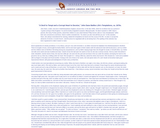
John Dane, a tailor, was born in Berkhampstead, England, around 1612. In the late 1630s, which he recollects here as a period of "a great coming to New England," he and his family emigrated to Ipswich, Massachusetts. He died in Ipswich in 1684. Dane's parents, like many Puritan parents, raised their children to carry what historian Philip Greven calls an "inner disciplinarian" within their own consciences at all times. Dane's mother reminded him: "Go where you will, God will find you out." In this narrative, Dane, who always remembered her warning, related the temptations he faced over the course of his life--to steal, to accept the advances of women, to avoid church--and the prices he negotiated with an all-seeing God. (The spelling of this selection has been regularized to make it easier to read.)
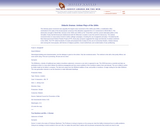
The interwar peace movement was arguably the largest mass movement of the 1920s and 1930s, a mobilization often overlooked in the wake of the broad popular consensus that ultimately supported the U.S. involvement in World War II. The destruction wrought in World War I (known in the 1920s and 1930s as the "Great War") and the cynical nationalist politics of the Versailles Treaty had left Americans disillusioned with the Wilsonian crusade to save the world for democracy. The antiwar movement drew on many tactics honed in earlier suffrage campaigns, including the use of pageants and plays. Circulated by the New Deal-sponsored Federal Theatre Project (FTP), these play synopses suggested the range and diversity of antiwar sentiment in the 1930s. The FTP vetted hundreds of scripts and prepared lists of plays for the use of community theaters. Antiwar dramas were among the most popular, with themes of religious pacifism, moral motherhood, and condemnation of war profiteering.

Article describes the difference between secondary and primary market research
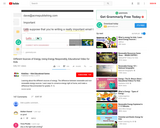
Relates different energy sources, renewable vs. non-renewable energy, ways to conserve energy.
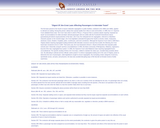
The first laws passed in the South to impose statewide segregation in public facilities, instituted in the 1880s and 1890s, applied to railroad car seating. During this period, railway lines spread rapidly from cities to rural communities. In 1896, the U.S. Supreme Court validated these early "Jim Crow" laws when it ruled in Plessy v. Ferguson that a Louisiana statute requiring "separate but equal" accommodations for white and black railroad passengers did not conflict with the Fourteenth Amendment clause guaranteeing all citizens equal protection of the laws. (Jim Crow, the colloquial term for segregation, referred to a blackface character popular on the minstrel stage.) Jim Crow legislation extended throughout the South to schools, hotels, restaurants, streetcars, buses, theaters, hospitals, parks, courthouses, and even cemeteries. Although the Supreme Court ruled in 1946 that a Virginia statute requiring segregated seating interfered with interstate commerce and was thus invalid, the following Jim Crow travel laws remained in force in 1954. That same year, the Court declared in Brown v. Board of Education that separate public schools were "inherently unequal" and thus unconstitutional. In 1955, the black community of Montgomery, Alabama, organized a boycott of the city's segregated bus system. In 1956, the Supreme Court ruled Alabama's laws requiring segregated buses unconstitutional. The specific wording of these Jim Crow laws, crafted to maintain the status quo, revealed deep anxieties about race. By allocating to railroad and bus officials "police powers" to enforce segregated seating and in the case of Virginia, power to determine the race of passengers, state legislatures sought to ensure segregation. By exempting certain categories of persons, specifically nurses, servants, and prisoners, the laws also avoided disrupting ways of life that did not threaten tenets of white supremacy.
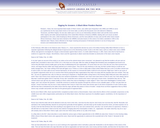
Richard L. Davis, the most important black leader of Ohio's miners, was called upon frequently in the 1880s and 1890s to serve as a spokesman for the many black miners in his home state, as well as the thousands more who labored in Alabama, Tennessee, and West Virginia. He was also called upon to serve as an intermediary between black rank-and-file miners and the white majority and white national leadership of the United Mine Workers of America (UMWA), dealing with such issues as black participation in the union, strike breaking by African Americans, and the racist attitudes of many rank-and-file white miners toward African Americans. (Davis was twice elected to the UMWA's executive board.) In this series of six letters submitted in 1891 to the National Labor Tribune, Davis reflected on the larger meaning and purpose of interracial unionism in an era of rising racial tensions and institutionalized discrimination.
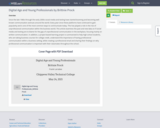
Since the late 1980s through the early 2000s social media and texting have started booming and becoming well known communication avenues around the world. Every year since these platforms have continued to gain popularity and is one of the most common ways to communicate today. This has played a role in the rise of unprofessional communication within the business world. This article examines the past and new data on if social media and texting are to blame for the gap of unprofessional communication in the workplace, focusing mainly on written communication. In addition, a project-based learning project is summarized to help high school students, who are taking business courses for college credit, understand the importance of having professional communication within a business setting, while creating a professional email and sharing their findings on why professional communication is important with their classmates throughout the school.
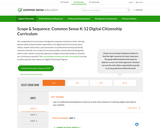
This FREE, pioneering curriculum is designed to empower students to think critically and make informed choices about how they create, communicate online

This FREE, pioneering curriculum is designed to empower students to think critically and make informed choices about how they create, communicate online
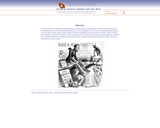
From its inception, the Confederacy sought international recognition from European nations. Support from Europe would help persuade the North to accept Southern independence, and, more immediately, secure a source of manufactured goods needed for the war effort. Southern efforts to gain recognition focused on England, the largest purchaser of southern cotton. This 1862 cartoon from the northern satirical weekly, Vanity Fair, presented the Confederacy's president trying to gain diplomatic recognition from a skeptical Great Britain. I hardly think it will wash
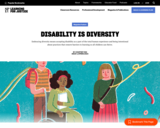
In the article “Confronting Ableism on the Way to Justice,” activist Keith Jones remembers the bias and deficit-based approach he experienced in school: “Being Black and a child with cerebral palsy, or ‘crippled’ as I was called, neither I nor my classmates were expected to put forth any effort to learn. So, little effort was spent on teaching us.” Now, Jones, a leader within the disability rights movement, advocates for disability representation in the broader social justice struggle, including in education because “we can’t have inclusive schools without disability-inclusive spaces and accommodations for learning.”

DNA Interactive is a great website with interactive lessons about genetics, biotechnology and DNA. Created by the DNA Learning Center, the website allows students to learn the basics of DNA and genetic manipulation through interactive modules, articles and mini-games. Additionally, there are teacher lessons, activities and answer keys available on the website that can be modified to fit your curriculum.
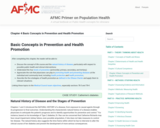
This virtual textbook on Public Health teaches strategies for disease prevention. The website explains disease prevention using three categories - primary, secondary, and tertiary. In the description of each one, the website includes several examples like vaccination, regular tooth brushing, screening, environmental modifications, and check-ups. The website also provides a chart with three medical conditions and the stages of disease prevention. As an interactive activity, teachers can print out this chart for students, leaving the stages of disease prevention boxes blank. Students can brainstorm what methods of disease prevention would fall under each category of each medical condition. At the end, the teacher can review some correct examples, using the key provided on the website. The goals of this activity are for students to identify methods of disease prevention; identify if the method is primary, secondary, or tertiary; gain an understanding of what primary, secondary, and tertiary mean; and be able to list some strategies of disease prevention for example medical conditions.
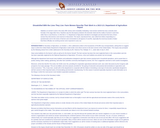
Statistics on women's work in the early 20th century were invariably misleading: most women worked but only a minority were formally in the wage labor force. Nowhere was the discrepancy between the domestic ideal and the reality of women's work lives wider than in rural America. In 1913 the U. S. Department of Agriculture decided to investigate and document the lives of farm woman they discovered a vast reservoir of discontent. The report, reproduced here, was culled from letters responding to a questionnaire sent to the wives of farmers and commented on all aspects of rural life, especially the enormous burden of labor that these officially non-working women were expected to carry out.

This is a blog from St. George's University that provides infographics explaining the benefits of diversity in the healthcare workplace, and why it should be encouraged. An activity I'd like you to do with your students is to have to have them read the whole article and then form small groups of 2 to 3 people. After forming groups, have each student share 1 way that diversity benefits patients, and 1 way diversity benefits health providers. The takeaway should be that diversity is very important in the healthcare space and it promotes better quality of care.
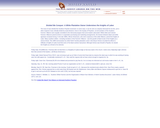
The issue of race divided the Southern Populist movement. In some ways, it can be seen as uniquely interracial for its time, yet in other respects it was critically limited by racial divisions. Even in the heyday of Populism, not all members of the Southern Farmers' Alliance were equally committed to the interracial program that some leaders advocated. While white and Colored Farmers' Alliances joined at times in cooperative purchasing and marketing arrangements, the tension between black and white agrarians remained strong. In the late 1880s, African Americans, who were suspicious of the white Alliance, joined the Knights of Labor. Many southern whites--including members of the Farmers' Alliance--saw the growth of black locals of the Knights as a serious threat. This 1889 memorandum by white North Carolina plantation owner John Bryan Grimes recorded his efforts to infiltrate a Knights of Labor local that some of his black workers had joined. Although Grimes was himself a Populist, he viewed the Knights as a threat to his interests.

The National Humanities center presents this collection of essays by leading scholars on the topic 'Divining America: Religion in American History'. The Essays explore religion in America in the 17th, 18th, 19th, and 20th centuries. The essays consider Native American religion, African American Christianity, the American Jewish experience, Mormonism, Catholicism, and Islam. They explore religious movements such as the Great Awakenings, the missionary movement, abolitionism, and fundamentalism. Topics like deism, pluralism, church and state separation, Manifest Destiny, and the Christian Right are also examined.

Business Principles course FREE teacher resources and trial access to online course solution as well as a correlation to WI state standards.

Website Description:
Make your students’ gameplay more meaningful by using our constitutional rights activity and assessment set designed specifically for Do I Have a Right?. This easy-to-use Extension Pack helps you give context and purpose to the game, as well as reinforce and assess the game concepts. That means deeper learning for students and best practices around game-centered learning for you! Extension Packs require PowerPoint and are designed for use with projectors or interactive whiteboards.
This Extension Pack now includes English language learner (ELL) supports. We've included tips and practice that help make differentiated instruction a breeze. Best of all, new instructional scaffolds now mean this lesson is adaptable for a wide range of learners!
Student Learning Objectives:
Students will be able to...
*Describe the arguments for and against listing people’s rights in the Constitution (Bill of Rights).
*Identify key rights granted by the Bill of Rights and the 13th, 14th, 15th, 19th, and 26th Amendments
*Recall the specific amendment that guarantees a particular right
*Recognize complaints not involving constitutional rights